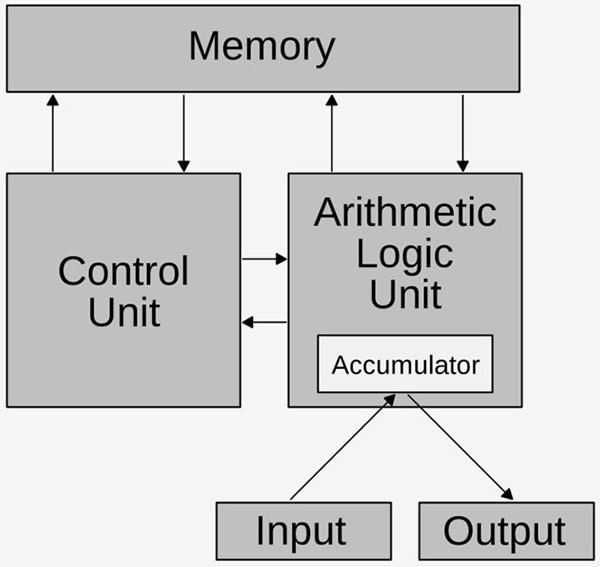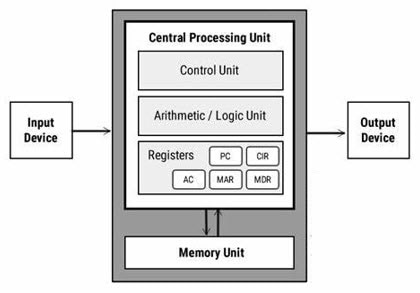Von-Neumann Architecture
2024-08-14 | By DWARAKAN RAMANATHAN
Introduction:
In the realm of computing, the Von Neumann architecture, conceived by the brilliant mind of John von Neumann, stands as a pivotal innovation. This architectural framework, introduced in the mid-20th century, fundamentally shapes how modern computers operate.
At its essence, Von Neumann architecture seamlessly orchestrates the interplay between a computer's central processing unit (CPU), memory, and input/output components. What sets it apart is the integration of a singular memory unit for both program instructions and data, providing an unparalleled level of versatility and programmability.
The von Neumann architecture was proposed by the Hungarian-American mathematician and physicist John von Neumann in a paper titled "First Draft of a Report on the EDVAC" in 1945. This paper outlined the basic principles of what is now known as the von Neumann architecture, which became a foundational concept in the design of modern electronic computers. The ideas presented in this paper laid the groundwork for subsequent developments in computer architecture and programming.
What are the two types of computers?
- Fixed Program Computer:
Definition: In a fixed program computer, the set of instructions that the computer can execute is permanently wired into the hardware. The computer is designed to perform a specific set of tasks, and its behavior cannot be altered or reprogrammed.
Characteristics:
Limited flexibility: The computer is dedicated to a specific function or set of functions.
The instruction set is hardcoded into the machine, and changes or updates require physical modifications to the hardware.
Examples of fixed program computers include early computing devices like calculators and some specialized control systems.
- Stored Program Computer:
Definition: In a stored program computer, the set of instructions that the computer can execute is stored in the computer's memory. This allows for greater flexibility, as the program instructions can be easily modified, loaded, and executed without changing the hardware.
Characteristics:
Flexibility: The computer can be programmed to perform a wide range of tasks by loading different sets of instructions into its memory.
The instruction set is stored in memory, typically in the form of machine code or higher-level programming languages.
Examples of stored program computers include modern personal computers, servers, and most general-purpose computing devices.
Why John Von-Neumann?
The concept of a stored program computer is closely associated with the work of John von Neumann, who proposed the architecture that became the foundation for most modern computers. In the von Neumann architecture, both data and instructions are stored in the computer's memory, and the central processing unit (CPU) fetches and executes instructions sequentially. This architecture allows for the creation of general-purpose computers that can perform various tasks through the execution of different programs.
Structure of Von-Neumann Architecture:

The architecture proposed by John von Neumann, commonly known as the von Neumann architecture, is the foundation for most modern computers. It consists of three basic units, each with a specific function:
- Central Processing Unit (CPU):
Function: The CPU is the brain of the computer. It performs arithmetic and logical operations, manages data storage and retrieval, and controls the execution of instructions.
Components:
Arithmetic Logic Unit (ALU): Responsible for carrying out mathematical and logical operations.
Control Unit (CU): Manages the execution of instructions, controls data flow, and coordinates activities within the CPU.
- Memory:
Function: Memory is used to store both data and instructions that the CPU needs to execute. It provides a fast and temporary storage space for the working data and the program instructions.
Components:
RAM (Random Access Memory): Volatile memory used for temporary storage of data and program instructions. It is fast but loses its content when the power is turned off.
ROM (Read-Only Memory): Non-volatile memory that stores essential instructions and data required for the computer to boot up. It retains its content even when the power is off.
- Input/Output (I/O) Devices:
Function: Input devices allow users to provide data to the computer, while output devices display or otherwise communicate the results of the computer's processing.
Examples:
Input Devices: Keyboards, mice, scanners, etc.
Output Devices: Monitors, printers, speakers, etc.

Many microprocessors and microcontrollers are constructed using this architecture as the base.
Conclusion:
As we conclude this exploration, it's clear that the integration of a unified memory unit, the orchestrated dance of the CPU, and the seamless interaction with input/output devices, as envisioned by von Neumann, remains integral to the DNA of contemporary technology. Beyond a historical artifact, Von Neumann architecture is a living legacy, shaping the adaptive and programmable nature of our digital landscape.
Have questions or comments? Continue the conversation on TechForum, DigiKey's online community and technical resource.





